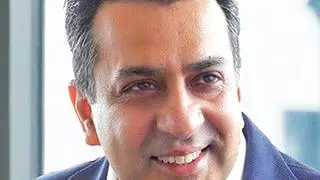Rakesh (19) preferred to send Diwali greetings to his 200-odd friends through WhatsApp rather than SMS. A regular on the instant messaging platforms, some three months ago he shifted to ‘unlimited data plans’ rather than SMS packs.
As free chat applications or Instant Messaging (IMs) platforms become popular in India, SMSes are on a declining trend. Globally, free chat apps have already overtook SMS in popularity.
Market sources point out that SMS revenues (person-to-person messaging) have substantially dipped on special days. But mobile Internet traffic (across telcos) is on the rise.
data Traffic increased
Interestingly, IMs — like Nimbuzz and WeChat — already claim increase in data traffic during special days.
Typically, a 160-character message costs less than 5 paise (compared to Re 1 by telcos) on chat platforms. The message is converted into data and the costs are embedded in subscribed packs. So messages come cheap, technically free.
According to Rahul Razdan, Director, 10c India Internet Private Ltd, the company marketing WeChat in India, it saw an 80 per cent increase in daily usage of localised large scale emoticons (stickers) between November 1 and November 3.
(If sent as SMS, these would be charged at a premium or not supported.)
WeChat, for example, came up with local Indian stickers and the feature to send a message simultaneously to 200 contacts. “Appreciation of localised content, resulted in increased usage,” Razdan said.
Nimbuzz, according to its CEO Vikas Saxena, saw a 10 per cent increase in traffic last Diwali and expects approximately another 15 per cent rise this season. This apart, an increase in Nimbuzz’s subscriber base will also propel data traffic growth.
“Every year, there will be some decrease in SMS revenues as more and more people embrace alternative messaging platforms,” he said.
Unofficial estimates suggest that SMS revenue (at Re 1) on special days now stand at Rs 30 per user, from Rs 100 (around 70 per cent drop) a year ago.
“IMs have gained substantial traction over SMS. The prime reason being cost advantage and ease of access,” Sandip Biswas, CEO, Lacewood Consulting, told Business Line .
Huge Market
A customer buying a data plan may send out more messages using a ‘free’ platform like WhatsApp; thereby raising revenue loss (if these messages were sent as SMS) potential.
Interestingly, market sources claim that India’s unique set-up will allow SMS to survive for some more time. Penetration of IMs in rural or semi-urban India is limited by the reach of smartphones. (Messenger services work mostly on smartphones)
Secondly, SMS still accounts for less than 5 per cent of total revenues of major operators compared with the Philippines (43 per cent), Indonesia (23 per cent) or Singapore (18 per cent).
Therefore, the prospects of free instant messaging cannibalising SMS is yet to become a major threat.
“Ideally, it is data that should generate revenues for telcos. Having bundling offers with IMs and re-looking at the SMS revenue needs to be explored in the future,” an official from a telecom company said on conditions of anonymity.








Comments
Comments have to be in English, and in full sentences. They cannot be abusive or personal. Please abide by our community guidelines for posting your comments.
We have migrated to a new commenting platform. If you are already a registered user of TheHindu Businessline and logged in, you may continue to engage with our articles. If you do not have an account please register and login to post comments. Users can access their older comments by logging into their accounts on Vuukle.